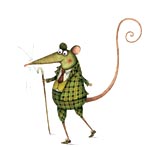Country mouse on birds of prey
There are more birds of prey on grouse moors than some would have us think, says Mark after a day's shooting


If you read the papers and believed some of the wildlife-crime reports, you might be under the impression that there is barely a bird-of-prey left on a grouse moor.
Nothing could be further from the truth. A well run grouse moor attracts raptors like bees to a honey pot. When shooting recently, I saw peregrines, harriers, sparrow hawks and a red kite. I missed spotting the eagle.
Landowners should be congratulated for creating a habitat that is ideal for both grouse and raptors at the cost of often hundreds of thousands of pounds a year. However, a balance needs to be met between grouse and the raptors that prey on them for this investment to continue. Without a balance, the raptors will reduce the numbers of grouse to a level that is unsustainable, at which point, the moor will be abandoned, to the detriment of grouse, raptors and the local community.
Protection has been necessary to increase our bird-of prey numbers from, in some cases, almost extinction; now, we need to find a consensus on a suitable balance between grouse and raptors to guarantee a future for all the birds of our man-managed wild moors.
Sign up for the Country Life Newsletter
Exquisite houses, the beauty of Nature, and how to get the most from your life, straight to your inbox.
Country Life is unlike any other magazine: the only glossy weekly on the newsstand and the only magazine that has been guest-edited by HRH The King not once, but twice. It is a celebration of modern rural life and all its diverse joys and pleasures — that was first published in Queen Victoria's Diamond Jubilee year. Our eclectic mixture of witty and informative content — from the most up-to-date property news and commentary and a coveted glimpse inside some of the UK's best houses and gardens, to gardening, the arts and interior design, written by experts in their field — still cannot be found in print or online, anywhere else.
-
 Six rural properties with space, charm and endless views, as seen in Country Life
Six rural properties with space, charm and endless views, as seen in Country LifeWe take a look at some of the best houses to come to the market via Country Life in the past week.
By Toby Keel
-
 Exploring the countryside is essential for our wellbeing, but Right to Roam is going backwards
Exploring the countryside is essential for our wellbeing, but Right to Roam is going backwardsCampaigners in England often point to Scotland as an example of how brilliantly Right to Roam works, but it's not all it's cracked up to be, says Patrick Galbraith.
By Patrick Galbraith